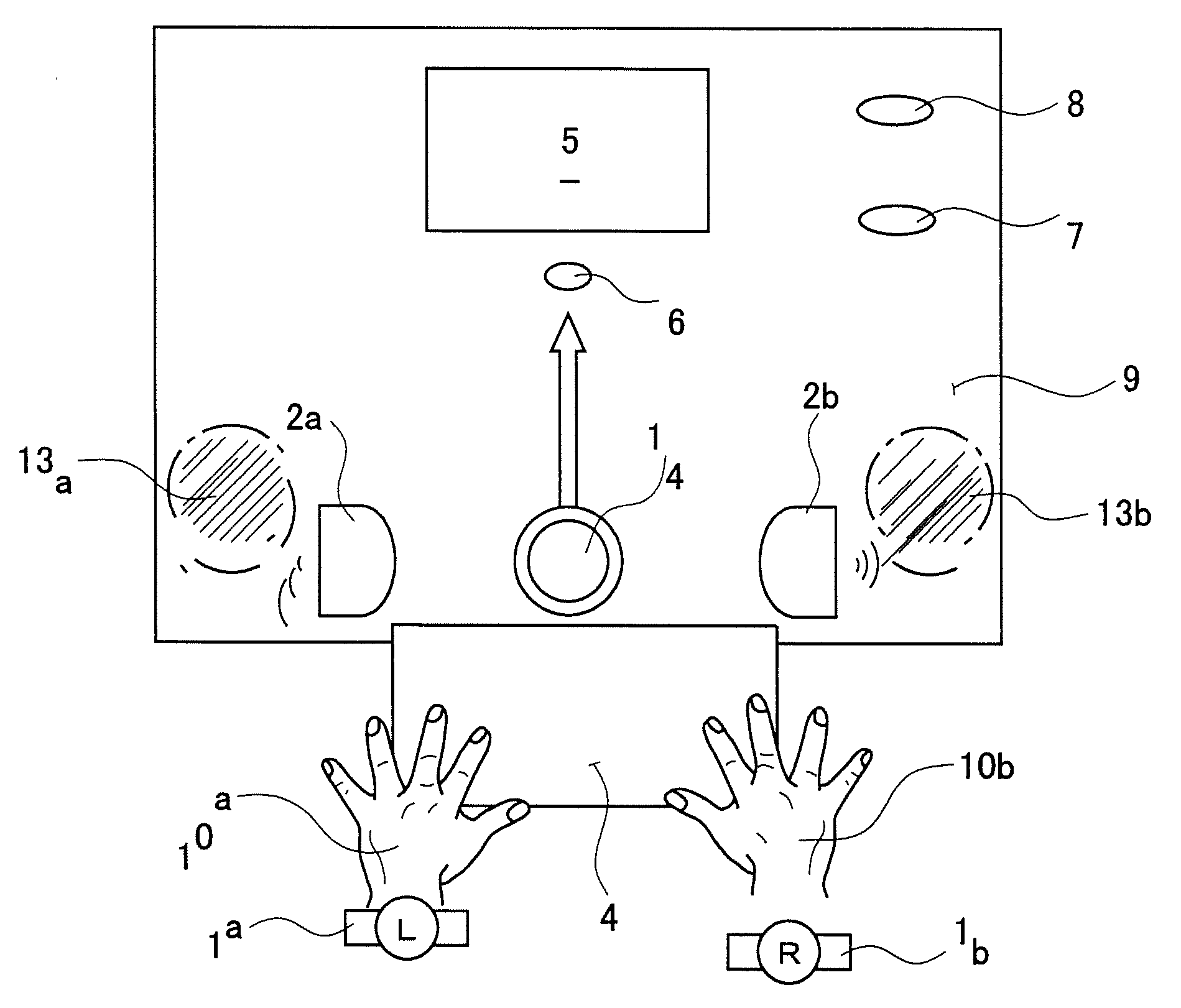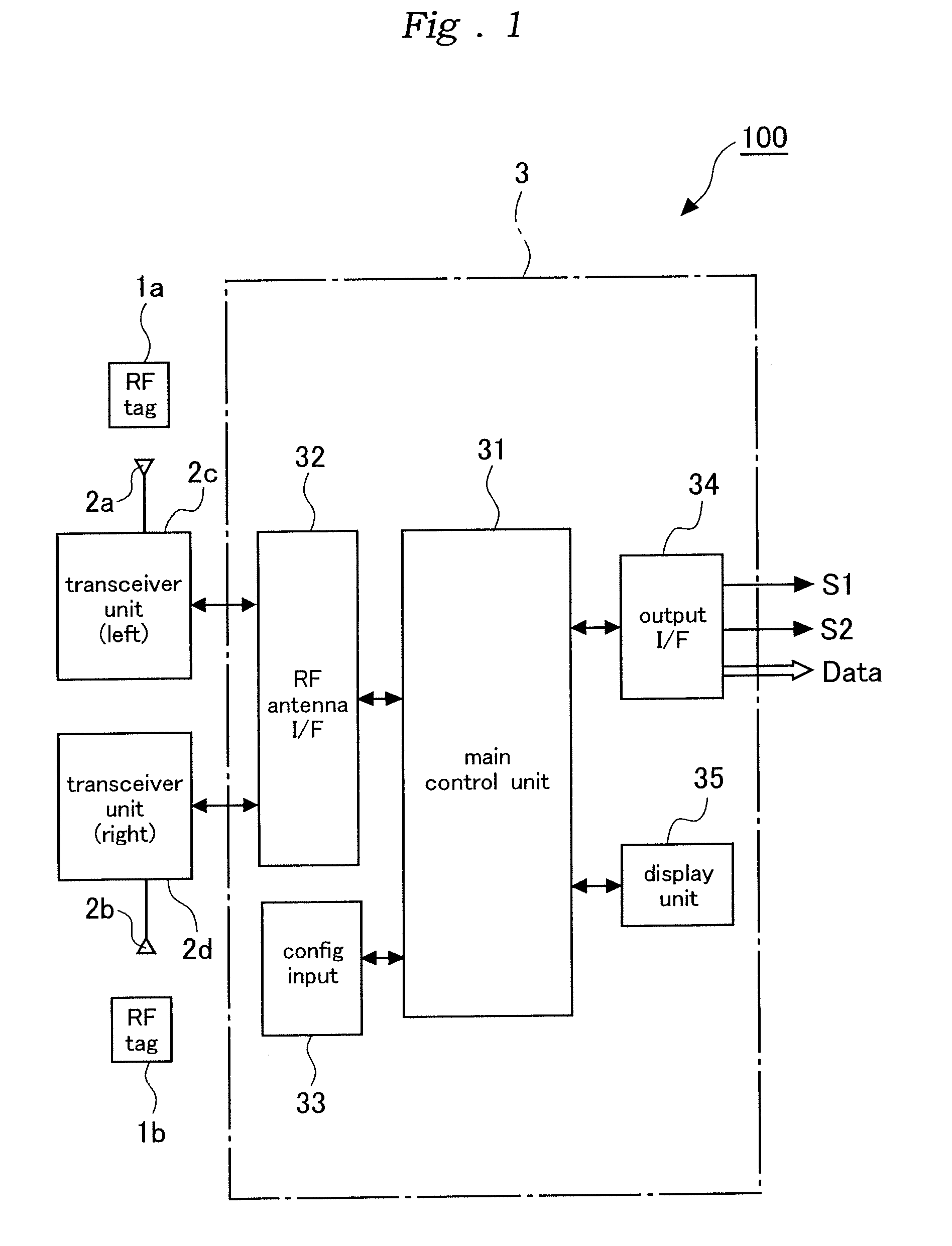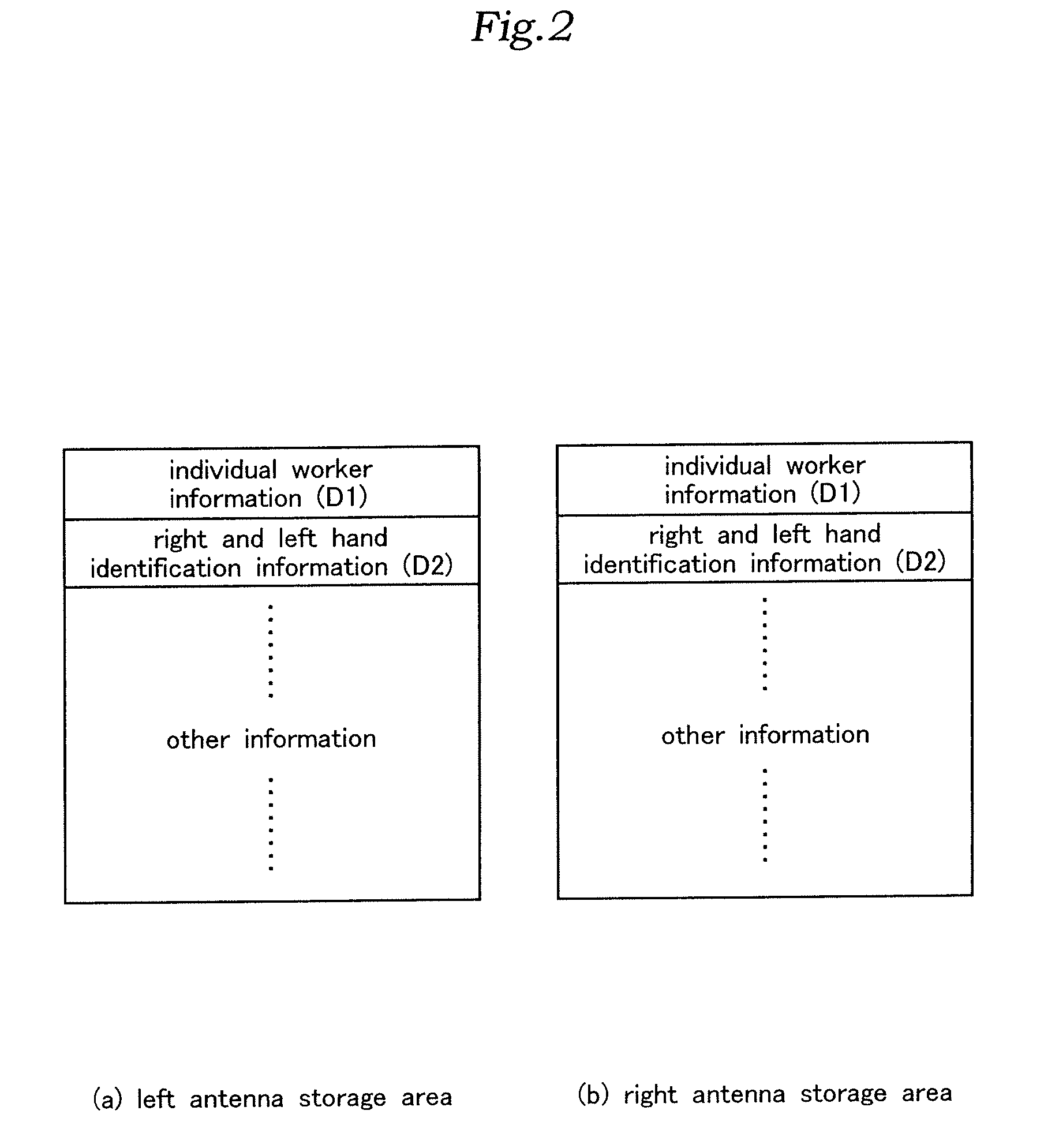Two-hand switch device
a switch device and hand technology, applied in frequency-division multiplexes, instruments, manufacturing tools, etc., can solve the problems of excessive fatigue of workers, excessive burden on workers for each activation, and worker temptation to resort to improper modes of operation, etc., to achieve low load, not causing excessive fatigue to workers, and high reliability
- Summary
- Abstract
- Description
- Claims
- Application Information
AI Technical Summary
Benefits of technology
Problems solved by technology
Method used
Image
Examples
Embodiment Construction
)
[0039]Preferred embodiments of the two-hand switch device of the present invention are described in the following in more detail with reference to the appended drawings.
[0040]FIG. 1 shows a hardware diagram of an exemplary two-hand switch device embodying the present invention. As shown in this drawing, the two-hand switch device 100 comprises a first RFID tag 1a configured to be worn on a pre-determined position (such as a wrist and finger) of a left hand (10a in FIG. 6) of a worker, a second RFID tag 1b configured to be worn on a pre-determined position (such as a wrist and finger) of a right hand (10b in FIG. 6) of the worker, a left hand RF antenna 2a placed in such a position as to enable a communication with the first RFID tag 1a worn on the pre-determined position of the left hand of the worker only when the left hand of the worker is placed in a pre-determined left hand safe position (13a in FIG. 6), a right hand RF antenna 2b placed in such a position as to enable a commun...
PUM
 Login to View More
Login to View More Abstract
Description
Claims
Application Information
 Login to View More
Login to View More - R&D
- Intellectual Property
- Life Sciences
- Materials
- Tech Scout
- Unparalleled Data Quality
- Higher Quality Content
- 60% Fewer Hallucinations
Browse by: Latest US Patents, China's latest patents, Technical Efficacy Thesaurus, Application Domain, Technology Topic, Popular Technical Reports.
© 2025 PatSnap. All rights reserved.Legal|Privacy policy|Modern Slavery Act Transparency Statement|Sitemap|About US| Contact US: help@patsnap.com



